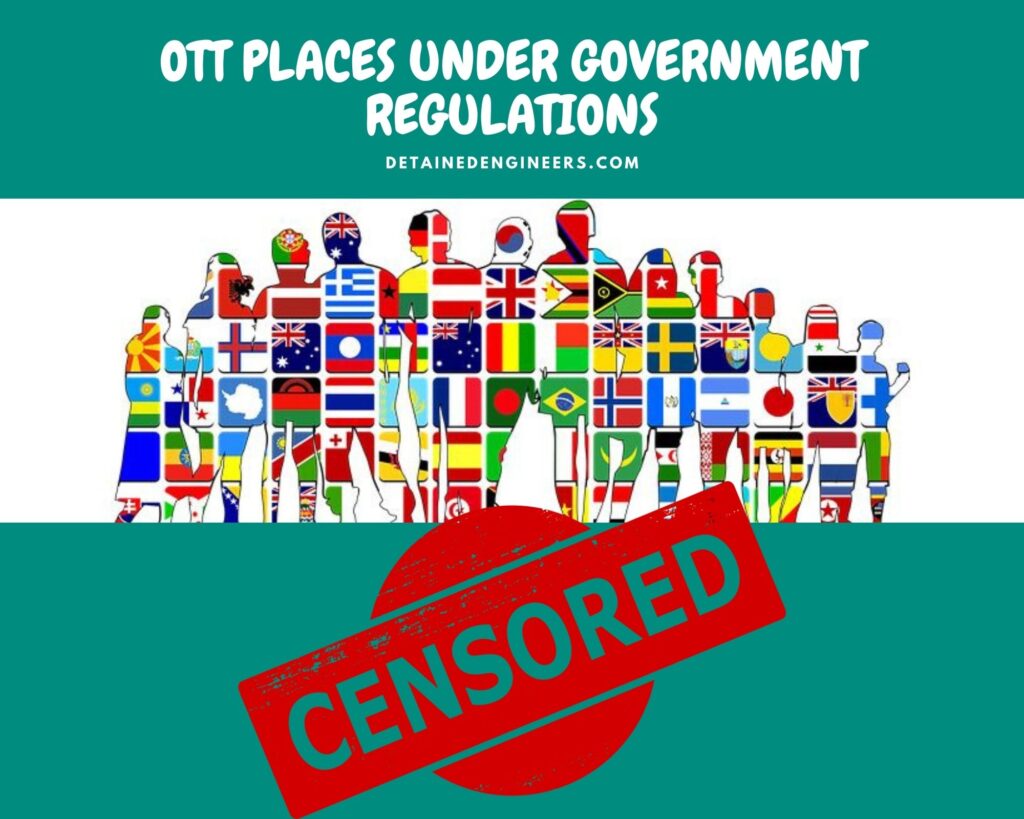What is OTTs
OTT stands for “Over the Top.” Otts under government regulation because it refers to all the services that are beneficial for streaming. It is called ‘over’ because these services are provided ‘over the top’ of a platform.
OTT not only comprises Netflix and Amazon Prime. It also includes audio services like Spotify & Wynk, messaging services like WhatsApp or Telegram, and voice services like Skype and WhatsApp.
In a rule that will generate a long-term consequence, the administration has shifted the OTTs under Government Regulation authorities’ power. In simple words, service providers such as Netflix, Amazon Prime, & several distinct service providers, whose platforms are used for surfing videos, are being shifted in the government regulations’ power. Online news gateways have also been produced under the same. Presently, there exists no law or independent group supervising digital content. In a piece of official information declared on Wednesday & approved by the President, online movies, news, & current affairs data now appear within the boundary of the I&B Ministry.
This will give the administration the authority on Over The Top services that were once unchecked until the current moment. So many times, the administration had pointed towards the requirement to proctor such places. In October 2019, the ministry had signified that it would publish a “contradictory” list of objections for the video surfing platforms, for example, Netflix & Hot star. It also desired the media Authority’s routes up a self-supervisory organization to obey that OTTs under government regulations on the News Broadcasting Standards Authority’s government regulations.
What can be the reason behind Netflix, amazon prime, and several services being brought OTTS under government regulations?
The reason behind Netflix being kept under OTTS under government regulation is not yet clear. But, several ideas were provided to the journalists and editors. The idea was that bringing Netflix under government regulations will regulate digital media.
It is stated that the public has mentioned several complaints that focus on the need to regulate online content.

The public has accused several web series, movies, & various online content to be violating & hurting their customs, religions, language, & social etiquette.
Nudity & sexuality have been a significant matter that has bothered the public a lot. As per the viewers, streaming platforms like Netflix, Amazon Prime, & Disney+ present content full of nudity and sexuality. They feel that these series & films have no importance, & in fact, they fill the brain with negativity.
The viewers stated that these contents are terrible for anyone, be it an adult or a teenager. They believe that these platforms play a significant role in building and molding an individual’s brain & character. Hence, there must be some government regulations on these content providers.
What is the outcome of bringing Netflix, Amazon Prime, other OTT places under government regulations?
The I&B Ministry emphasized the obligation to build government regulations on digital media previously. It had urged the judge that it can begin by electing a council of individuals as a legal body for establishing the guidelines about the law of hate speech in the media.
The I & B Minister once announced in 2019 regarding the OTTs, stating that the government would not hinder freedom of media. Yet, he also declared that there must exist a management system on OTTs the same way it is present for several outlets, for instance, the magazines & electronics.

Fear of getting censored
The step to shift the OTT services below the Information and Broadcasting ministry might also indicate that specific streaming places, for example, Netflix, Amazon Prime, etc., will need to appeal for endorsement of the material producers want to present. This is supposed to increase too many fights as several OTT services hold materials facing a threat of being banned in our country India.
Conclusion
While considering its scope, India needs to have thoroughly analyzed the exact requirement for the rules before it truly drafts or mentions them. With separate things, it might have to look into whether its goal is to secure its public or to connect any administrative gaps & build a regulatory administration for online players the similar way it has for offline ones. Here, it is essential to remark that the two methods of content users are little related than they resemble to be. In films & T.Vs, the public is not under any restriction of the content presented to them.
Although for theater, they choose to pick among several films published at that time, and for T.Vs, they possess the choice of skipping through channels. They do not, however, have the option to select whatever is ultimately presented on the screen.
In online content, the public is in the greater authority of what they choose to see from the numerous choices obtainable eventually. The first one concerns the content getting “push” to customers, whereas users “pull” their required content in the other one. Because the public has a more satisfying say in the second one, a regulatory strategy obeyed for push-based users may not certainly do justice to the functioning of the ways online content is presented.
This is when the public’s preferences are changing every time, and they resemble being engaged in obtaining a mixture of styles of movies & programs. It might likewise be necessary to move behind & learn to address the people’s needs in the suitably possible way before pushing forth the concept of any sort of legislation.
Government Issues Regulations For OTT Platforms And Online Content: Read More
You can also read a blog on PUBG.

